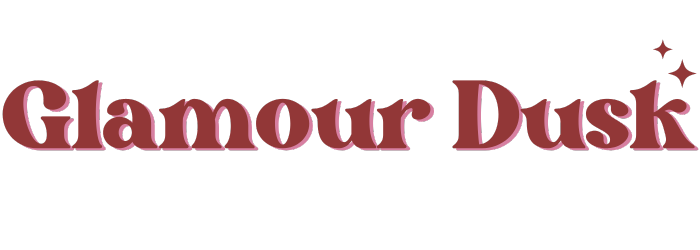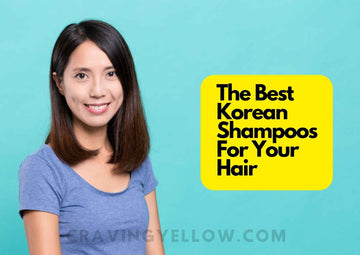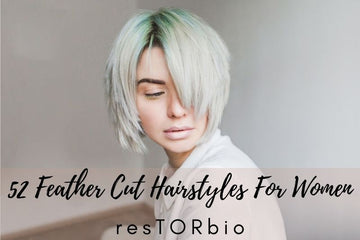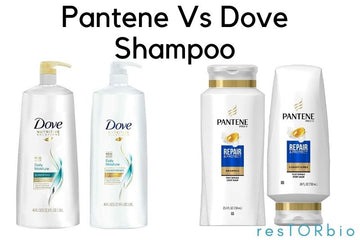Paulas Choice Bha Vs The Ordinary Aha Bha - My Choice For 2025
by Shopify API on Dec 03, 2025
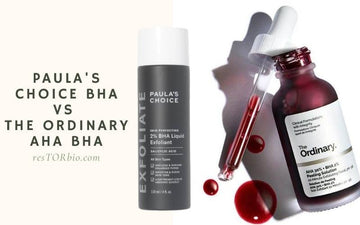
Paulas Choice Exfoliant vs The Ordinary Peeling Solution, which is best for your skin?
There are lots of choices out there when it comes to BHA or AHA.
Maybe you open this article to know what would be the best choice. Like you, I want to know which BHA or AHA will be good for my skin.
Luckily, there are two brands that are best known when it comes to BHA or AHA.
| Aspect | Paula's Choice BHA | The Ordinary AHA BHA |
|---|---|---|
| Key Ingredient | Contains salicylic acid (BHA) to exfoliate and unclog pores | Features a blend of alpha hydroxy acids (AHAs) and beta hydroxy acids (BHAs) to exfoliate and improve skin texture |
| Product Range | Offers a range of BHA exfoliants in various strengths and formats | Provides a comprehensive line of exfoliating acids, including AHA and BHA solutions |
| Target Audience | Targets individuals seeking effective exfoliation and pore-clearing benefits | Caters to consumers interested in chemical exfoliation and skin resurfacing |
| Formulation | Utilizes a leave-on exfoliant in liquid or gel form for targeted application | Available as leave-on solutions in liquid form, often in higher concentration |
| Skin Concerns | Addresses concerns related to acne, blackheads, and enlarged pores | Aims to improve skin texture, reduce congestion, and address uneven skin tone |
| Pricing | Positioned as a mid-range, accessible brand | Positioned as an affordable and accessible brand |
| Popular Products | Paula's Choice Skin Perfecting 2% BHA Liquid Exfoliant, Paula's Choice 2% BHA Gel | The Ordinary AHA 30% + BHA 2% Peeling Solution, The Ordinary Salicylic Acid 2% Solution |
| Marketing Approach | Emphasizes the use of salicylic acid for gentle yet effective exfoliation | Focuses on affordable, high-potency exfoliating acids for improved skin texture |
| Availability | Widely available through various retailers and online platforms | Widely available through various retailers and online platforms |
Paula's Choice BHA vs The Ordinary AHA BHAis the best option on the market now. But what are the main differences between these two brands, and which should you choose? Which is a better quality product at a better price point?
Of course, I tried these two products on my skin to see firsthand which will work best. I compared these two brands when it comes to formulation and effectiveness.
To help answer those questions, I have compiled a list of the benefits and concerns of each brand.
About The Ordinary AHA 30% + BHA 2% Peeling Solution

AHA 30% + BHA 22% Peeling Solution by The Ordinary cruelty-free provides deeper exfoliation to reduce pore congestion and improve skin radiance. This formula improves skin texture and reduces fine lines.
About Paula's Choice Skin Perfecting 2% BHA Liquid Exfoliant

This Skin Perfecting 2% BHA liquid exfoliant from Paula's Choice is essential for any skin problems. A gentle, skin-friendly skincare fluid, this product can be used to treat chemical burn of skin from skincare and minimize blackheads, redness, and breakouts.
Quick Summary
- These products are cruelty-free, and both contain aha or PHA.
- They do not contain harsh alcohols, common allergens, and oils.
- Both are likely to be beneficial for anti-aging, skin brightening, Skin sensitivity, oily skin, acne-prone skin and reducing pores.
- They are reef-safe.
- These products share eight ingredients.
The Ordinary AHA BHA vs Paula's Choice: The Active Ingredients and Benefits

The Ordinary AHA 30% + BHA 2% Peeling Solution
This formula is scientifically designed to deliver a specific blend of 30% Alpha Hydroxyl acids (Glycolic Lactic Tartaric, Citric, and Lactic) along with 2% beta hydroxy acids.
They have been pH-balanced to ensure maximum efficacy. The combination works to exfoliate the Skin's surface deep, unclog pores, and combat blemishes.
It also contains a Tasmanian Pepperberry derivative that has been studied to reduce irritation from acid use.
Additionally, it also includes a cross polymer of hyaluronic acid and Vitamin B5 for comfort, Vitamin B5 for healing, and black carrot as an antioxidant.
This formula also has very high levels of free acids. Use this formula only if your skin isn't sensitive and an expert in acid exfoliation.
For me, the formulation is good and works well on my skin. I didn't experience any irritations unlike other customers who have. Of course, the formulation will work well depending on the skin type of the user.
Concerns:
There are many reasons skin irritation can occur: dry and sensitive skin, allergic reactions to certain ingredients, sensitivity Skin to certain elements, allergies, dermatitis, and bug bites.
Good thing is I didn't experience any skin irritation even I have dry skin.
Rosacea can be caused by bacteria, mites, or blood vessel problems. Reddening of the Skin is the most common symptom.
Paula's Choice Skin Perfecting 2% BHA Liquid Exfoliant
The non-abrasive formulation is laced with BHA Salicylic Acid to remove dead skin cells from the Skin's surface and the pores. This helps clear the complexion by reducing blemishes, blackheads, and other inflammation.
The blemish-clearing mission of salicylic acid is helped by methyl propanediol. It enhances absorption to get the best out of every ingredient. Green tea extract provides a substantial dose of antioxidants that soothe and protect.
Ideal for combination, oily and blemish-prone skin types.
This brand does something good on my skin, too. But, it seems that it is most effective to those with oily or combination skin. Since I have dry skin, I only see minimal changes on my skin, making it smooth.
Skin concern:
It can be characterized by dryness and redness. Many factors can cause dry Skin: genetics, weather, diet, age, and skin conditions.
I didn't experience any skin concerns when I used this product. It's just that it is most effective to those with oily and combination skin, and I have dry skin.
Rosacea can be caused by bacteria, mites, or blood vessel problems. Reddening of the skin type is the most common symptom.

Paula's Choice vs The Ordinary: Customer Reviews
You can't go wrong if you're in your 40's or 30's and are looking for high-quality, weekly treatment. Ordinary AHA 30% BHA 2% Peeling Solution, a powerful, affordable exfoliant, sloughs off dull skin cells to reveal a smoother and more even complexion. If your skin is sensitive, consult your dermatologist before applying this mask.
Many skincare lovers love the Paula's Choice 22% BHA Liquid Exfoliant. It is best used with a cotton pad. This product is suitable for all skin types. It will transform your skin.
AHA and BHA: The Ordinary BHA vs Paula's Choice
Is AHA better than BHA?
AHAs and BHAs are types of hydroxy acids found in cleansers, toners, moisturizers, and other skincare products. They share the same purpose of exfoliating the skin.
No one hydroxy acid is better than the other since they differ in which skin problem they target.
Both AHAs and BHAs remove dead skin cells and even out the skin tone. They also decrease inflammation and reduce the appearance of large pores and wrinkles.
Many skin care products contain these hydroxy acids to take advantage of these benefits.
So, what's their difference?
Alpha Hydroxy Acid or AHA are water-soluble acids used to treat uneven skin tone and hyperpigmentation, such as melasma and scars, by peeling away the surface, allowing for evenly toned skin cells to take over. It can also be used to address enlarged pores, fine lines, and wrinkles.
On the other hand, Beta Hydroxy acids (BHA) are specifically used for acne-prone skin. Because they are oil-soluble, they can go deeper into the pores to eliminate excess sebum and dead skin cells, unclogging them.
Ultimately, this process helps lessen the growth of acne-causing bacteria.

What should and should not be used with AHA BHA?
Since AHAs and BHAs are strong acid components, you must be careful in mixing them up with other primary ingredients found in your skincare routine.
It's crucial that every item in your regimen works in harmony with the others so you can get the best results. Mindlessly putting together different products may result in unwanted reactions such as skin irritation.
To address the drying effect brought about by the exfoliating purpose of hydroxy acids, one can mix in moisturizing ingredients to their routine.
Moisturizing ingredients that will help limit irritation and soothe the skin include ceramides, petrolatum, and glycerin.
Another product that can be mixed with AHAs/BHAs is SPF, as they will help aid with the sun sensitivity you might experience after exfoliation.
Refrain from mixing in retinol in your routine if you already use AHAs/BHAs.
Dermatologists strongly discourage using retinoids in conjunction with other skincare products that contain acids since this may result in excessive skin sensitivity, irritation, and redness.
The professionals also advise against the use of products that contain peptides, vitamin C, and other direct acids such as glycolic, lactic, mandelic, and salicylic acids in the same regimen as hydroxy acids.

Should AHA or BHA go first?
Believe it or not, aside from the combination of products in your regimen, the order of application is also crucial in taking care of your skin.
The general rules that exist in the world of skincare may already cover most of the products. Still, the addition of actives, which includes AHA and BHA, makes things a tad more complex.
Actives are pH-dependent ingredients that have direct results on the skin.
In the routine order, they go after cleansing and before hydrating. When using actives, you'll want to go for those with lower pH first, going to the highest pH. In that case, BHA goes first before AHA.
To better understand why you have to note that BHA is oil soluble while AHA is not.
Therefore, you must use the BHA first to fight the sebum in your pores and clear them out so that it won't get in the way when you apply the AHA.
What happens if you use AHA BHA everyday?
Usually, when you first try a product containing a chemical exfoliant, your skin will purge.
Skin purging closely resembles a breakout because it typically appears as blackheads or tiny bumps that are the color of the skin.
This is true for products with AHA and BHA, so you don't have to worry about purging for a while. Just make sure to observe when it gets too bad or lasts too long.
If you follow the instructions of the application and rules surrounding these hydroxy acids and religiously perform your routine, your skin will start to get used to it and show great results.

Everyday use of AHA BHA will reduce fine lines, age spots, wrinkles, acne, and enlarged pores and help improve your skin's color and texture. They may also gently remove existing blackheads.
Of course, consistency is key, but you should also remember that too much is never good. Using excessive AHAs, BHAs, and chemicals at once can irritate the skin.
As a result, you could experience skin issues like dryness, redness, and even more acne instead of the benefits.
How to use AHAs or BHAs safely?
Before using an over-the-counter product containing AHAs or BHAs, it is a good idea to consult your dermatologist. They would know which amount is safe for you and could teach you the correct way of using them. Also, they can alert you whether it could affect any medication you take.
The basic step in applying AHA and BHA-containing products is to first apply them only to a portion of your skin to check for immediate reactions.
You can proceed with no worry if there isn't, but if there is, you should no longer try applying it again and talk to a doctor if the reaction worsens.
Follow the instructions exactly regarding the amount, period, and frequency.
AHAs must be used in at least 8% concentrations to be effective, whereas BHAs only need a concentration of about 2%. Anything less than this range may take a little longer to take effect. At the same time, amounts far higher than these levels may be dangerous for the skin, thus requiring more precaution when using.
Since AHA and BHA are active ingredients, leaving them on for too long would be dangerous for your skin. For best use, leave it on for at most 10 minutes. Prolonged exposure to exfoliants leads to red burn marks that could be dry and painful.
Other great tips to keep in mind for safe AHA/BHA skin consumption include using moisturizer and sunscreen right after. The moisturizer will soothe your skin after its interaction with active acids. At the same time, the sunscreen protects it from the sun while it is still extra sensitive.
Lastly, remember to not exfoliate parts of your skin that are burned, wounded, or open from cuts, as it can worsen the condition.
Can I use ordinary AHA BHA everyday?
The Ordinary's Peeling Solution is a great way to achieve smooth, glowing skin - but it's important to use it as directed in order to avoid any irritation.

The product should be used no more than twice a week, and even that may be too often for people with sensitive skin.
If you're new to acids, start with once per week and increase frequency as your skin becomes more accustomed to the product.
Apply it to a clean, dry face and leave it on for 10 minutes before rinsing with lukewarm water. For best results, use it in the evening.
Which is Better Paula's Choice or The Ordinary?
It will be a personal choice for everyone. The Ordinary AHA 30% BHA 2% produces a more apparent, more even skin texture.
There are also fewer side effects than other BHA. While Paula's Choice BHA may be the better choice for some people, others prefer The Ordinary AHA 30% BHA 2%. It is well-known for its innovative formulas.
The brand has created products that are ahead of the curve, addressing the needs of the modern beauty consumer. We hope that our article on the benefits and concerns of Paula's Choice Bha Vs. the Ordinary Aha Bha has shed some light on these two products.
